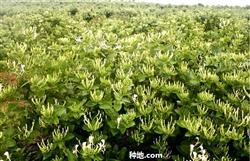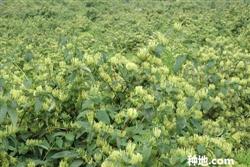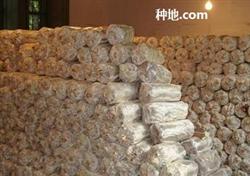How can honeysuckle be cultivated with high yield

How can honeysuckle be cultivated with high yield? The method of honeysuckle (Lonicera japorica Thunb.) Also known as honeysuckle, Shuanhua, Erhua, honeysuckle, honeysuckle, etc., is the bud of honeysuckle, is a commonly used Chinese material, with heat-clearing and detoxification, wind and detumescence function. In recent years, in addition to medicine, it is also an important raw material for the production of toothpaste, beverages and cosmetics. The cultivation experience is introduced as follows: 1 Distribution and habit of honeysuckle is mainly produced in Shandong, Henan and other provinces, and is now cultivated all over the country. Among them, the "honeysuckle" produced in Henan is of good quality, and the "honeysuckle" produced in Shandong is famous all over the country. Honeysuckle is a light-loving crop, like warm and humid climate, strong adaptability, can withstand cold, drought and waterlogging. The requirement of soil is not strict, it can be cultivated in mountains, hills and plains in the north and south of the country, but it is better to be loose, fertile and well-drained sandy loam. (2) cultivation technique 2.1 Propagation methods include cutting, seed, root division and striping propagation. Cutting is divided into direct cutting and cutting seedlings. Because the direct cutting occupies a large area and the survival rate is low, it is disadvantageous to seedling management; seed propagation, labor-consuming and slow seedling formation; root splitting and striping are disadvantageous to mass propagation, time-consuming and labor-consuming. The above methods are not widely used, and now they are mainly propagated by cutting seedlings. The sandy loam with loose soil, fertile soil and good drainage and the place with convenient irrigation and water source were selected as seedling land for land preparation. The soil was deeply turned over 30cm, leveled and raked fine, and base fertilizer was applied to make a high border with a width of 1.3m for cutting seedlings. The cultivated land can be planted on barren slopes, on the edge of the ground, beside ditches, and on sporadic plots in front and behind the house, with deep turning, sufficient base fertilizer, high border or high ridge planting. In the selection of cuttings, 1-2-year-old strong and substantial branches were selected, and the cuttings about growing 30cm were cut, and about 3 nodes were retained. Remove the lower leaves and leave the upper 2mur4 leaves. Cut the lower end into a smooth slope, tie it into small bundles, quickly dip the lower end slope with 500mg/kg indole butyric acid aqueous solution for 10 seconds, cool and dry immediately after cutting. Cuttage seedlings are raised in early spring on the whole cuttage bed, 15-20cm lines are drawn according to the row spacing, and every 3-5cm, a small wooden stick is used to drill a guide hole on the border surface, then the cuttings are inserted into the hole, compacted and pressed, and then watered, and a plastic film bow shed is built to keep warm and moisturizing. It takes about half a month to take root and sprout new buds. At this time, the bow shed can be removed for seedling management. Planting seedlings in spring can be planted in the winter of the same year or in the spring of the second year. Transplanting takes place before germination in early spring or dormant period in autumn and winter. On the whole planting ground, dig holes according to row spacing 130cm, plant spacing 100cm, wide and deep 30-40cm, mix sufficient amount of base fertilizer and subsoil into the hole, plant a strong seedling in each hole, fill fine soil compacted, firm, and pour through the fixed root water. 2.2 after field management, weeding, fertilization and transplanting survived, it should be combined with intertillage and weeding and fertilization for 3 or 4 times a year. When weeding in the middle ploughing, attention should be paid to the shallowness around the plant rhizosphere and a little deeper in the distance, so as to avoid root injury and facilitate root growth. Fertilization in spring and summer should be mainly based on rotten human and animal manure or ammonium sulfate and urea, and should be spread in shallow trenches, and mixed fertilizer such as rotten stable manure or compost, ammonium sulfate and calcium superphosphate should be applied in winter combined with rhizosphere soil cultivation. After plastic pruning and transplanting, through shaping and pruning, the creeping vine is cultivated into an erect single dwarf shrub, which increases branches, expands the crown, branches are sparse, evenly distributed, ventilated and transparent, and the yield can be greatly increased by increasing flower harvesting area and stubble number. Specific shaping and pruning methods: within 1-2 years after planting, the main purpose is to cultivate an upright and sturdy trunk. When the height of the trunk is 40-50cm, cut off the top slightly to promote the lateral bud to germinate into branches. After germination in the spring of the second year, five sturdy branches were left in the upper part of the trunk as the main branches, which were planted in two layers. In winter, 6 pairs of buds are left in the first-order branches from the main branch, and the upper part is cut off. After that, leave 6-7 pairs of buds in the second-grade branches from the first-order branches, and cut off the upper part. In the flower branches growing on the second-grade branches, if there is a hook-shaped tender, it should be picked in time. The nodes germinated in the second-order branches or on the original old flower branches are dense and short, and the leaf twigs are all flower branches, which should be retained. After that, it should be pruned once a year in summer after flower picking, and topdressing should be done once for each pruning. It should also be cut once a year in winter, from after Frosts Descent to before freezing. Winter shearing is mainly to cut off old branches, disease and insect branches, thin and weak branches, cross branches and so on, so that nutrients are concentrated on the emergence of new branches and the formation of flower buds. (3) harvesting and processing 3.1 the opening time of harvesting honeysuckle is concentrated, about 15 days, and timely picking is the key to improve the yield and quality. During the harvest period, before the bud opens, when the bud changes from green to white, the upper part expands, and the lower part is cyan (or when the bud turns completely white), it must be harvested before 9 o'clock in the morning. When harvested at this time, one is not to damage immature buds, and the other is the best quality and high yield of buds. 3.2 processing should be timely after processing and harvest to prevent composting and fermentation. The processing methods are air drying or drying, pay attention to the temperature should not be too high when drying, first control at about 30 ℃ for 2 hours, then raise the temperature to 40 ℃ and 50 ℃ for several hours, when the honeysuckle is nearly dry, raise the room temperature to about 60 ℃ to make the flowers dry quickly. Compared with the drying method, this drying method has better quality and higher output. Click to get more honeysuckle planting technology click to get more medicinal material planting technology
- Prev

How to cultivate honeysuckle?
How to cultivate honeysuckle? Please guide the cultivation of honeysuckle: first, cuttings are generally carried out in the rainy season. In the overcast and rainy weather in summer and autumn, choose the sturdy 1-2-year-old branches without diseases and insect pests, cut them into 30cm and 35cm long, remove the lower leaves as cuttings, and cut them as you like. On the selected land,.
- Next

How to get high yield by planting Ganoderma lucidum in indoor bags?
How to get high yield by planting Ganoderma lucidum in indoor bags? Is there any technology to refer to? Indoor bag cultivation of Ganoderma lucidum can refer to the following Ganoderma lucidum planting techniques: bag planting process, culture material preparation, → mixing, → bagging, → sterilization, → and mother seed production, inoculation, → culture, → cultivation, management of → harvest, → processing.
Related
- Fuxing push coffee new agricultural production and marketing class: lack of small-scale processing plants
- Jujube rice field leisure farm deep ploughing Yilan for five years to create a space for organic food and play
- Nongyu Farm-A trial of organic papaya for brave women with advanced technology
- Four points for attention in the prevention and control of diseases and insect pests of edible fungi
- How to add nutrient solution to Edible Fungi
- Is there any good way to control edible fungus mites?
- Open Inoculation Technology of Edible Fungi
- Is there any clever way to use fertilizer for edible fungus in winter?
- What agents are used to kill the pathogens of edible fungi in the mushroom shed?
- Rapid drying of Edible Fungi

